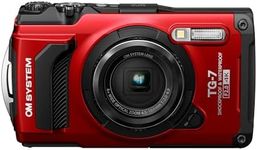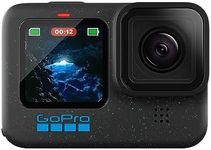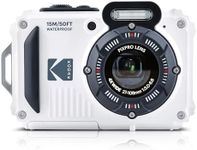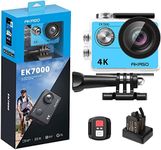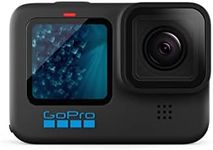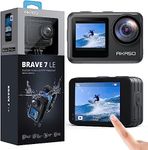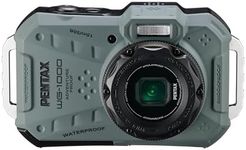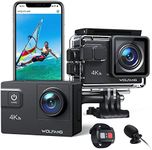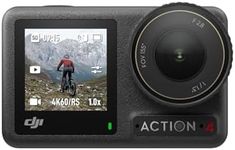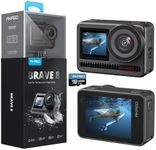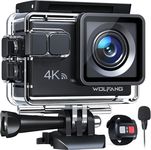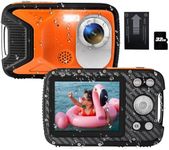Buying Guide for the Best Underwater Cameras
Choosing the right underwater camera can be a bit challenging, but with the right knowledge, you can find the perfect fit for your needs. Underwater cameras are designed to withstand the pressures of being submerged while capturing high-quality images and videos. When selecting an underwater camera, it's important to consider several key specifications that will impact your overall experience and the quality of your photos and videos. Here are the most important specs to consider and how to navigate them.Waterproof Depth RatingThe waterproof depth rating indicates how deep the camera can go underwater without being damaged. This spec is crucial because it determines the environments in which you can use the camera. Depth ratings typically range from 10 meters (33 feet) to over 30 meters (100 feet). If you plan to use the camera for snorkeling or shallow dives, a lower depth rating may suffice. However, for scuba diving or deeper underwater exploration, you'll need a camera with a higher depth rating to ensure it can handle the pressure.
Image QualityImage quality is determined by the camera's sensor size and resolution, measured in megapixels (MP). Higher resolution cameras capture more detail, which is important for producing clear and sharp images. Sensor size also plays a role; larger sensors generally perform better in low light conditions, which is common underwater. For casual use, a camera with around 12-16 MP should be sufficient. For professional or high-quality photography, look for cameras with 20 MP or more and larger sensors.
Video CapabilitiesVideo capabilities refer to the camera's ability to record video, including resolution and frame rate. Common resolutions include Full HD (1080p) and 4K. Higher resolutions provide more detail and clarity, which is important for capturing underwater scenes. Frame rate, measured in frames per second (fps), affects the smoothness of the video. A higher frame rate (e.g., 60 fps) results in smoother motion. If you plan to shoot a lot of video, especially action shots, look for a camera with at least 1080p resolution and 60 fps.
Battery LifeBattery life indicates how long the camera can operate on a single charge. This is important because underwater activities often take place in remote locations where recharging may not be possible. Battery life is usually measured in the number of shots or video recording time. For casual use, a camera with a battery life of around 200-300 shots or 1-2 hours of video recording should be adequate. For extended trips or professional use, look for cameras with longer battery life or the option to use spare batteries.
Durability and Build QualityDurability and build quality refer to how well the camera can withstand harsh conditions, including impacts, temperature changes, and exposure to saltwater. A durable camera is essential for underwater use, as it will be exposed to various elements. Look for cameras with rugged designs, shockproof ratings, and corrosion-resistant materials. If you plan to use the camera in challenging environments, prioritize models known for their robustness and reliability.
Ease of UseEase of use encompasses the camera's controls, interface, and overall user experience. Underwater cameras should have intuitive controls that are easy to operate, even with gloves on. Features like large buttons, simple menus, and clear displays are important. If you're new to underwater photography, look for cameras with user-friendly interfaces and automatic settings that can help you get great shots without extensive manual adjustments.
Additional FeaturesAdditional features can enhance your underwater photography experience. These may include built-in Wi-Fi for easy sharing, GPS for location tagging, and various shooting modes like macro or wide-angle. Some cameras also offer manual controls for more advanced users. Consider what extra features are important to you based on your specific needs and preferences. For example, if you enjoy sharing your photos instantly, a camera with Wi-Fi capabilities would be beneficial.
